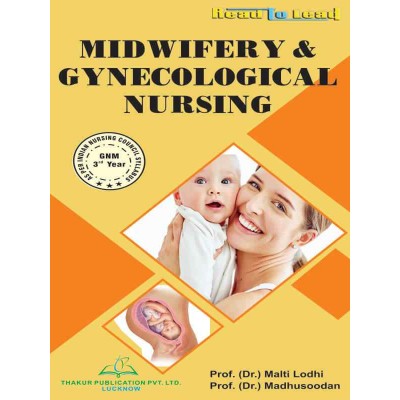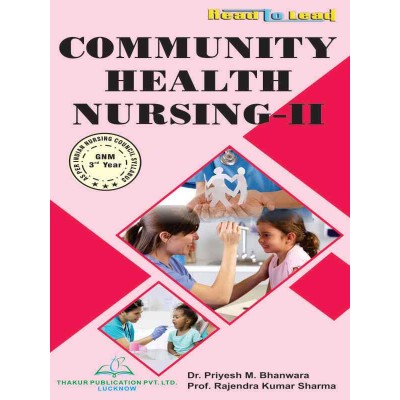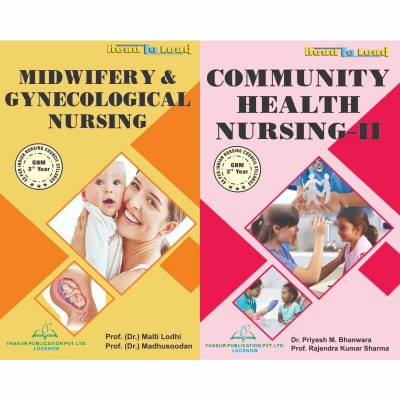Categories
- Pharmacy
-
Nursing
-
MBA
-
BBA
- U.P. State University
- Veer Bahadur Singh Purvanchal University, Jaunpur
- Chaudhary Charan Singh University, Meerut
- Dr. Bhimrao Ambedkar University, Agra
- Chhatrapati Shahu Ji Maharaj University, Kanpur
- Mahatma Jyotiba Phule Rohilkhand University, Bareilly
- Mahatma Gandhi Kashi Vidyapith, Varanasi
- Dr. Ram Manohar Lohia Avadh University, Ayodhya
- Deen Dayal Upadhyaya Gorakhpur University
- Prof. Rajendra Singh (Rajju Bhaiya) University, Prayagraj
-
BCA
- UP State Universities
- University of Pune
- I.K.Gujral Punjab Technical University (PTU)
- University of Rajasthan
- Rashtrasant Tukadoji Maharaj Nagpur University
- Uttar Pradesh NEP2020
- University of Rajasthan ,Jaipur (According to NEP-2020)
- BCCA (B. Com - Computer Science)
- Haryana
- West Bengal
- BBA (CA)
- PUNE BCA (Sci,Commerce)/B.Com (CA)
- Dr. A. P. J. Abdul Kalam Technical University, Lucknow ( AKTU )
- MCA
-
B Ed
- Lucknow University B.Ed Books
- Chaudhary Charan Singh University/Maa Shakambhari University, Saharanpur
- Dr Bhim Rao Ambedkar University, Agra
- Mahatma Gandhi Kashi Vidyapeeth, Varanasi
- Chhatrapati Shahu Ji Maharaj University
- Prof. Rajendra Singh (Rajju Bhaiya) University, Prayagraj (PRSU)
- Mahatma Jyotiba Phule Rohilkhand University(Mjpru), Bareilly
- Dr. Ram Manohar Lohia Avadh University, Ayodhya
- Bundelkhand University, Jhansi
- B.A,B.ed
- B.Sc, B.ed
- Deen Dayal Upadhyaya Gorakhpur University
- Veer Bahadur Purvanchal University (VBPU)
- Maharaja Suhel Dev State University ,Azamgarh (MSDSU)
- Raja Mahendra Pratap Singh State University, Aligarh (RMPSSU)
- Barkatullah Vishwavidyalaya (Bhopal)
- Jiwaji University (Gwalior)
- Vikram University (Ujjain)
- Dr. Harisingh Gour University (Sagar)
- Devi Ahilya Vishwavidyalaya (Indore)
- Rani Durgavati Vishwavidyalaya (Jabalpur)
- Awadhesh Pratap Singh University (Rewa)
- Maharaja Chhatrasal Bundelkhand University (Chhatarpur)
- D. EL. ED
- TET
-
B Com
-
B Sc
- B.Sc. U.P. State Universities Common Syllabus NEP
- Veer Bahadur Singh Purvanchal University, Jaunpur
- University of Lucknow
- Chaudhary Charan Singh University, Meerut
- Madhya Pradesh
- Chhatrapati Shahu Ji Maharaj University, Kanpur
- Dr. Bhimrao Ambedkar University, Agra
- Mahatma Gandhi Kashi Vidyapith, Varanasi
- DEEN DAYAL UPADHYAYA GORAKHPUR UNIVERSITY
- Prof. Rajendra Singh (Rajju Bhaiya) University, Prayagraj
- Dr. Ram Manohar Lohia Avadh University, Ayodhya
- Mahatma Jyotiba Phule Rohilkhand University, Bareilly
- Uttarakhand State Universities
- B.Sc. Bihar Universities Common Syllabus NEP
- University of Rajasthan (Jaipur)
- Haryana
-
Bachelor of Arts [B.A.]
- B.A. Of U.P. State Universities Common Syllabus NEP
- Veer Bahadur Singh Purvanchal University, Jaunpur
- University of Lucknow
- Chaudhary Charan Singh University, Meerut
- Chhatrapati Shahu Ji Maharaj University, Kanpur
- Dr. Bhimrao Ambedkar University, Agra
- Mahatma Gandhi Kashi Vidyapith, Varanasi
- Deen Dayal Upadhyaya Gorakhpur University
- Prof. Rajendra Singh (Rajju Bhaiya) University, Prayagraj
- Dr. Ram Manohar Lohia Avadh University, Ayodhya
- Mahatma Jyotiba Phule Rohilkhand University, Bareilly
- Madhya Pradesh
- Uttarakhand
- Bihar
- University of Rajasthan (Jaipur Syllabus as Per NEP2020)
- Haryana NEP-2020
- B Tech
- LLB
- SWA Education
Midwifery And Gynecological Nursing

Comprehensive textbook of midwifery and gynecological nursing for GNM 3rd year in English by Thakur Publication. Midwifery And Gynecological Nursing book covered all syllabus.
Click here to Buy E-Books:
Thakur Publication offers the comprehensive "Midwifery and Gynecological Nursing" book in English, designed specifically for GNM 3rd-year students. Aligned with the prescribed syllabus, this book covers all the essential topics in midwifery and gynecological nursing.
AS PER INC SYLLABUS – BESTSELLER BOOKS – PRACTICAL and STUDENT-FRIENDLY CONTENT
With its in-depth content, students gain a thorough understanding of the subject. This book serves as a valuable resource, equipping GNM students with the knowledge and skills required for their studies and future practice in midwifery and gynecological nursing.
ISBN- 978-93-90972-82-1/Authors- Prof.(Dr.) Malti Lodhi, Prof.(Dr.) Madhusoodan
Tax excluded
Comprehensive textbook of midwifery and gynecological nursing for GNM 3rd year in English by Thakur Publication. Midwifery And Gynecological Nursing book covered all syllabus.
Click here to Buy E-Books:
Thakur Publication offers the comprehensive "Midwifery and Gynecological Nursing" book in English, designed specifically for GNM 3rd-year students. Aligned with the prescribed syllabus, this book covers all the essential topics in midwifery and gynecological nursing.
AS PER INC SYLLABUS – BESTSELLER BOOKS – PRACTICAL and STUDENT-FRIENDLY CONTENT
With its in-depth content, students gain a thorough understanding of the subject. This book serves as a valuable resource, equipping GNM students with the knowledge and skills required for their studies and future practice in midwifery and gynecological nursing.
ISBN- 978-93-90972-82-1/Authors- Prof.(Dr.) Malti Lodhi, Prof.(Dr.) Madhusoodan
Syllabus
3.1- MIDWIFERY AND GYNECOLOGICAL NURSING
|
Unit No. |
Learning Objectives |
Contents |
Hours |
|
I |
Describe the scope and trends in midwifery |
Introduction: a) Definition of midwifery and obstetrical nursing b) Scope of midwifery c) Basic competencies of a midwife d) History of midwifery e) Trends of maternity services in India f) f) Vital statistics related to maternal health in India. |
(04) |
|
II |
Describe the anatomy and physiology of female reproductive system |
Reproductive System a) Review of structure and function of female reproductive system b) Female pelvis –structure, types and diameters |
(05) |
|
III |
Describe the stages of Embryological and fetal development. |
Embryology and Foetal Development a) Oogenesis, spermatogenesis, fertilization and implantation. b) Embryology and Fetal development c) Placenta and membranes: - Structure - Functions - Abnormalities - Liquor amni - Umbilical cord d) Fetal skull: - Structure - Diameters - Fontanels and sutures e) Fetal circulation |
(08) |
|
IV |
Describe the physiological changes in pregnancy and the management of normal pregnancy
Demonstrate skill is caring for pregnant women |
Normal Pregnancy and its Management a) Pre-conception care b) Genetic counseling c) Physiological changes in pregnancy d) Diagnosis of pregnancy - History - Signs & symptoms e) Antenatal care: - History taking - calculation of expected date of delivery, - Examination and investigations - Health Education and counselling - Drugs and immunizations f) Minor disorders and their management |
(12) |
|
V |
Describe the various stages of labour and the role of the midwife in caring for a woman in labour.
Demonstrate skill in conducting the normal delivery
|
Normal Labour and its Management a) Definition and stages b) Causes and signs of onset of labour c) True and false labour d) First stage of labour: - Physiology - Monitoring using partograph and its interpretation - Care of mother: physical and psychological - Pain management - Setting up of the labour room including newborn corner e) Second stage: - Physiology and mechanism - Monitoring - Conduction of normal delivery - Episiotomy - Essential newborn care f) Third stage: - Physiology and signs - Active management of third stage - Examination of the placenta - Episiotomy suturing g) Fourth stage: - Physiology - Care of the mother and baby - Postpartum family planing |
(15) |
|
VI
|
Describe the management of normal newborn
Development of skill in caring for the normal newborn |
Management of Newborn a) Assessment b) Physiological adaptation c) Apgar scoring d) Examination for defects e) Breast feeding- BFHI f) Care of newborn -Skin, eyes, buttocksetc g) Bonding and rooming in h) Minor disorders of new born: - Birth marks, rashes, skin - Infections, sore buttocks, - Infection of eyes. |
(14) |
|
VII
|
Describe normal pureperium and the role of midwife in the caring for woman in puerperium |
Management of Normal Puerperium a) Definition and objectives of care b) Physiological changes c) Postnatal counselling d) Lactation and feeding e) Care during puerperium – breast and perineal care postnatal exercise, postnatal examination, follow up, family welfare f) Minor ailments and management. g) Family planning |
(10) |
|
VIII
|
Describe the complications of pregnancy
Demonstrate skills in providing care for women with complicated pregnancy
|
Management of Complications during Pregnancy a) Bleeding in pregnancy- early and late - Ectopic pregnancy - Abortion - Antepartum hemorrhage - Vesicular mole b) Hyperemesis gravidarum c) Gestational diabetes mellitus d) Pregnancy inducedhypertension - Pre eclampsia and Eclampsia e) Hydromnios– poly and oligo f) Pelvic inflammatory diseases g) Intra uterine growth retardation h) Post maturity i) Intra uterine death
High Risk Pregnancy: - Monitoring- NST, USG - Anemia - Jaundice - Viral - Urinary tract infections - Hearts diseases - Diabetes - AIDS and STD’s - Osteomalacia, STD - Teenage pregnancy - Elderly Primigravida - Multipara - Multiple pregnancy |
(12) |
|
IX |
Describe the management high risk labour
Demonstrate skills in early detection and prompt management of high risk labour
|
Management of High Risk Labour a) Malposition, malpresentations b) Contracted pelvis c) Abnormal uterine actions d) Cervical Dystocia e) Premature rupture of membranes, precipitate and prolonged labour, induction of labour obstructed labour, f) Obstetrics Emergencies-Cord prolapse, cord presentation, amniotic fluid embolism, obstetric shock, rupture of uterus, shoulder dystocia, vasa previa. g) Complications of third stage - Postpartum Hemorrhage - Atonic uterus - Injuries to the birth canal - Retained placenta and membranes - Inversion of uterus |
(10) |
|
X |
Describe the puerperal Complications
Demonstrate skill in the management of complications of puerperium |
Management of Complications of Puerperium - Puerperal pyrexia - Puerperal Sepsis - Thrombophlebitis and Embolism - Breast engorgement, Mastitis, Breast abscess - Puerperal psychosis |
(4)
|
|
XI
|
Describe the management of high risk and sick newborn
Demonstrate skills in caring for high risk and sick newborns
|
High Risk and Sick Newborn a) Assessment b) Nursing care c) Management of newborn with: - Hyperbilirubinaemia - Neonatal hypoglycemia - Hypothermia - Neonatal Convulsions - Rh incompatability - Small for dates - Low birth weight - Preterm - Asphyxia, RDS - Sepsis - Birth injuries Cephal hematoma Caput succedaneum Facial &Erb’s palsy Torticollis
Hemorrhage - Congenital anomalies d) Newborn of HIV positive mother, diabetic mother <p class="MsoNormal" style="m |
2 other products in the same category:
Your review appreciation cannot be sent
Report comment
Report sent
Your report cannot be sent
Write your review
Review sent
Your review cannot be sent










